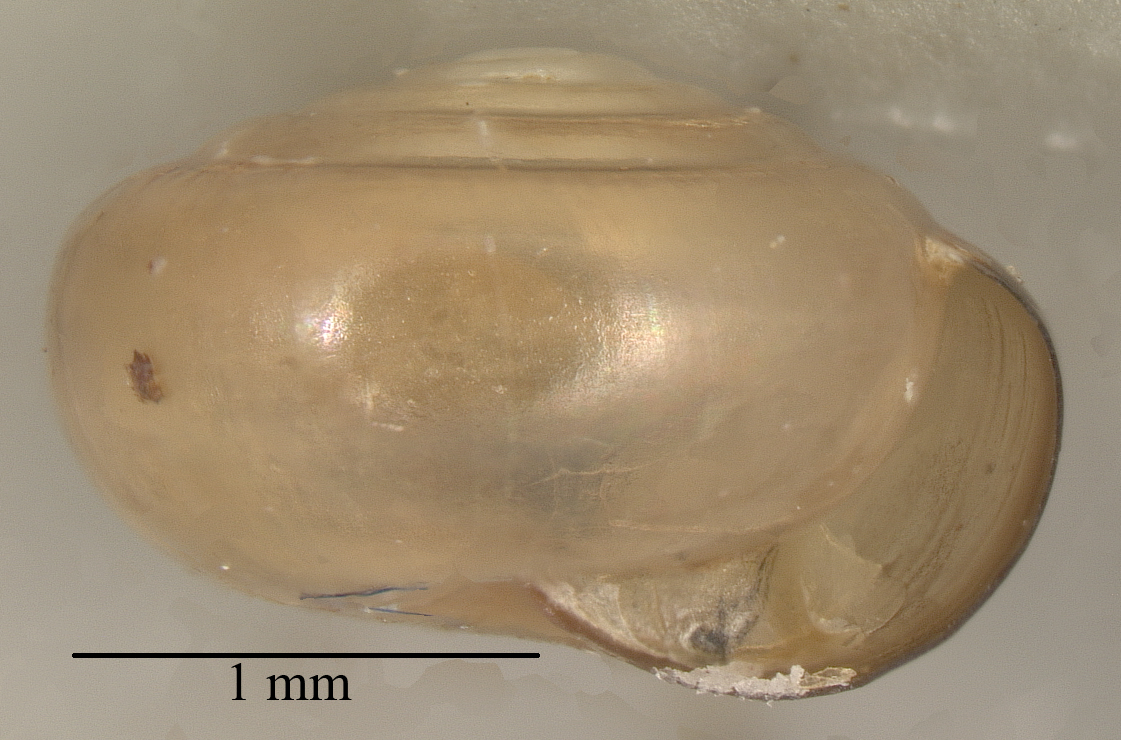
Pristiloma arcticum (Lehnert 1884) Northern Tightcoil
Vitrinidae, ,Gastropoda, Mollusca, Animalia
Range: Known in Washington from Snoqualmie Pass in both King and Kittitas Counties and from Mt. Rainier National Park. In Oregon it is rare, occuring south of Crater Lake and on the Deschutes National Forest, and is suspected on the Winema, Umpqua, and Willamette above 2,000 feet in elevation in moist conifer forests among mosses near seeps, springs, and riparian areas (Burke communication).
Identification:
Description: Shell up to 2.6 mm diameter, 1.6 mm high, diameter less than 2 times height; with about 5 whorls; whorls gradually increasing; spire low conoid.
Natural History: Found on leaf litter of deciduous trees, on the underside of woody debris, and in moist meadows at higher elevations (up to 1200 m). Pristiloma arcticum crateris is known from the Oregon Cascades in damp to wet habitats (i.e., wet meadows, springs, seeps, riparian areas and the edges of wetlands or merely areas of perennially moist ground vegetation). Large and small woody debris, grasses, sedges, forbs, and shrubs are important habitat components within these sites. Areas of habitat are generally small and occur at relatively high elevations.
Conservation Status: Listed as critically endangered by the Oregon Natural Heritage Program in Oregon with a listing of threatened or endangered throughout its range.
Literature Cited:
Pilsbry, Land Mollusca of North America, Volume II, Part 1, pages 401-403.
Taxonomy:
Etymology: pristys – a saw, loma – border, alluding to the serrate marginal lip of P. lansingi; arctica - northern
____________________________________________________________________
http://www.blm.gov/nhp/efoia/or/fy2003/im/im-or-2003-045Att1.pdf
Pristiloma arcticum crateris
Pristiloma arcticum crateris is known from the Oregon Cascades in damp to wet
habitats
(i.e., wet meadows, springs, seeps, riparian areas and the edges of wetlands
or merely
areas of perennially moist ground vegetation). Large and small woody debris,
grasses,
sedges, forbs, and shrubs are important habitat components within these sites.
The
subspecies is rare within Oregon. Areas of habitat are generally small and
occur at
relatively high elevations. Due to perennially moist habitat conditions for
this species,
historically occurring fires likely were of low intensity.
____________________________________________________________________
http://www.greendrake.org/e/mollusks_files/prar.jpg
Members of +this subspecies are in the subfamily Zonitinae, subgenus Pristiloma. ....solitary snails up to 2.75mm ... shell depressed-globular in shape, has no umbilicus and 5 1/2 to 6 tightly coiled whorls. The live shell is pink or buff in color, smooth and very glossy. crateris differs from other P.A. in several ways. crateris has a more rounded shoulder, pinker rather than normal golden or tawney shell color, lip is thickened and reflected where it meets the base and the aperature is crescent-shaped when viewed from below and flatter on the base. Crateris type from vacinity of Crater Lake, OR